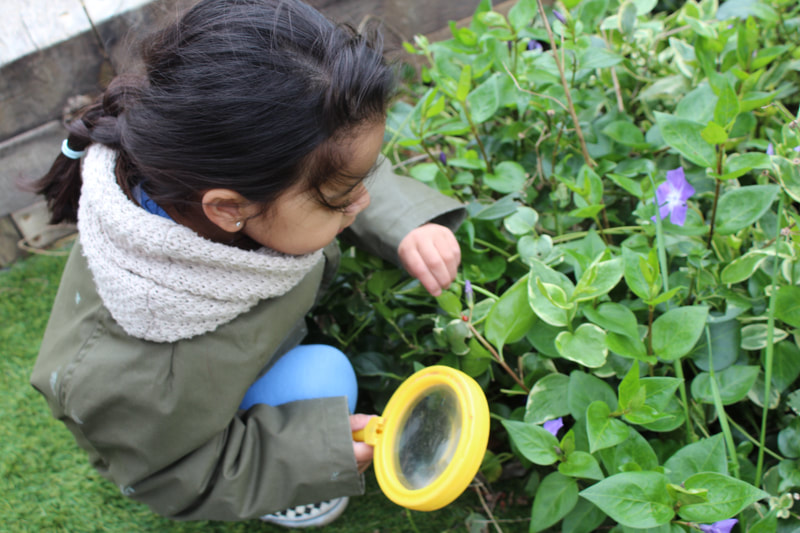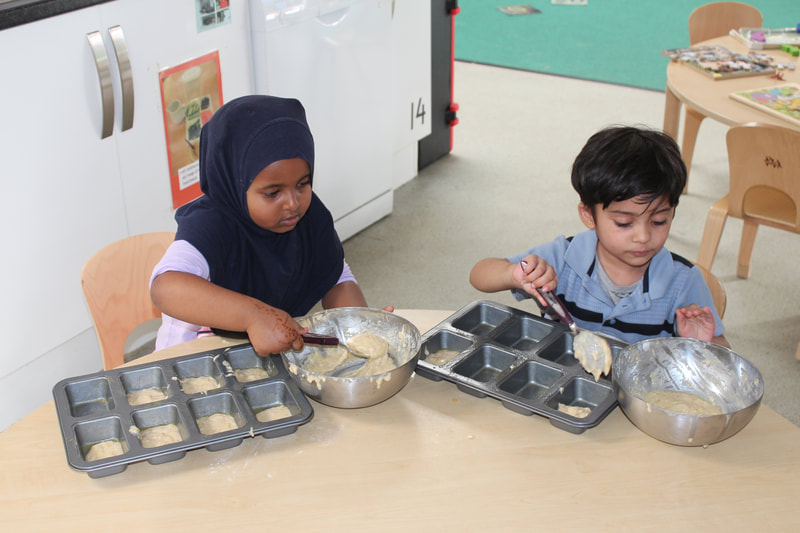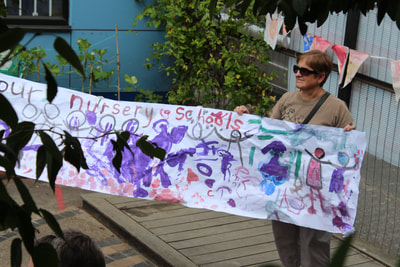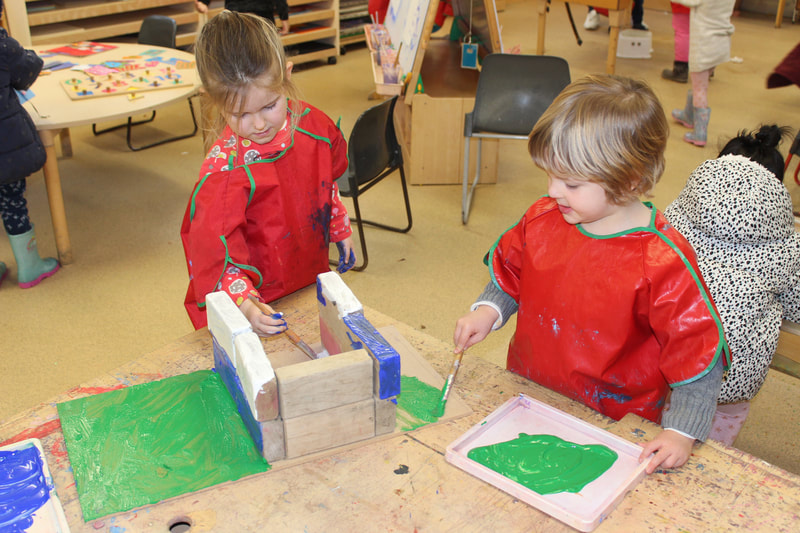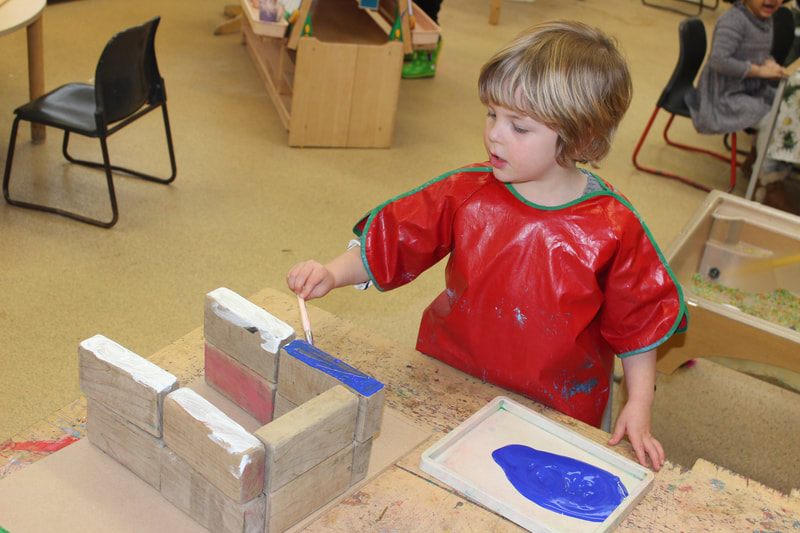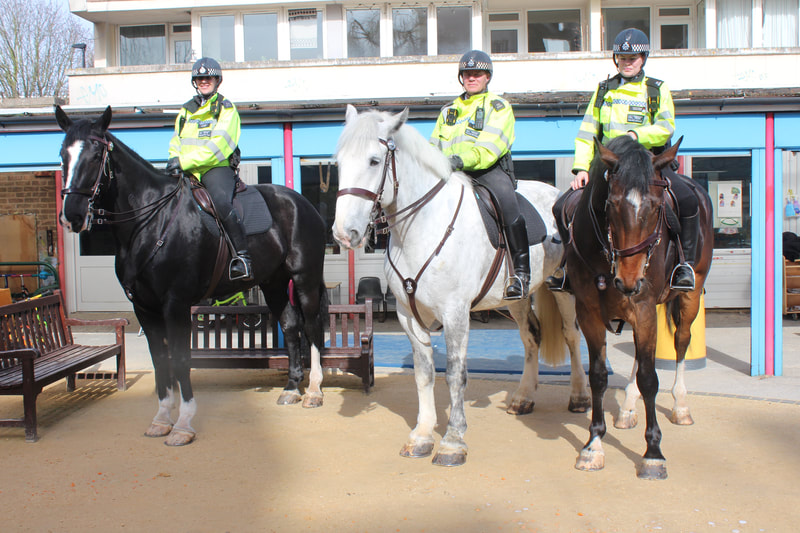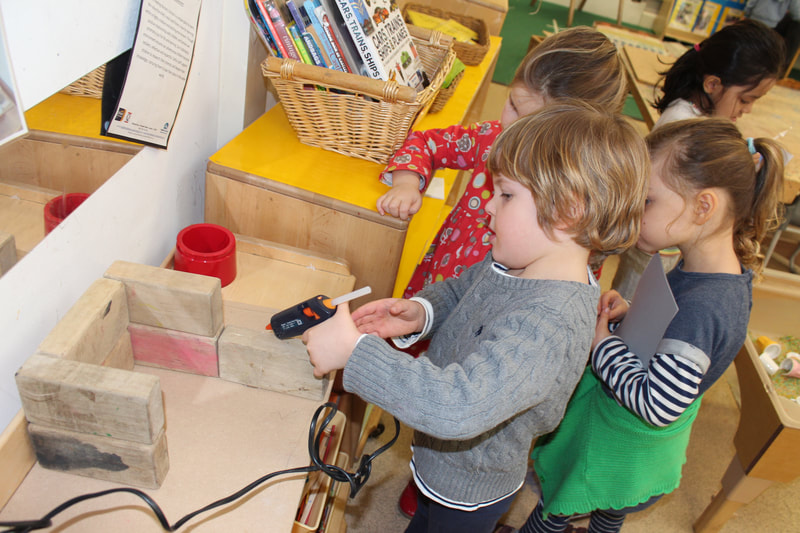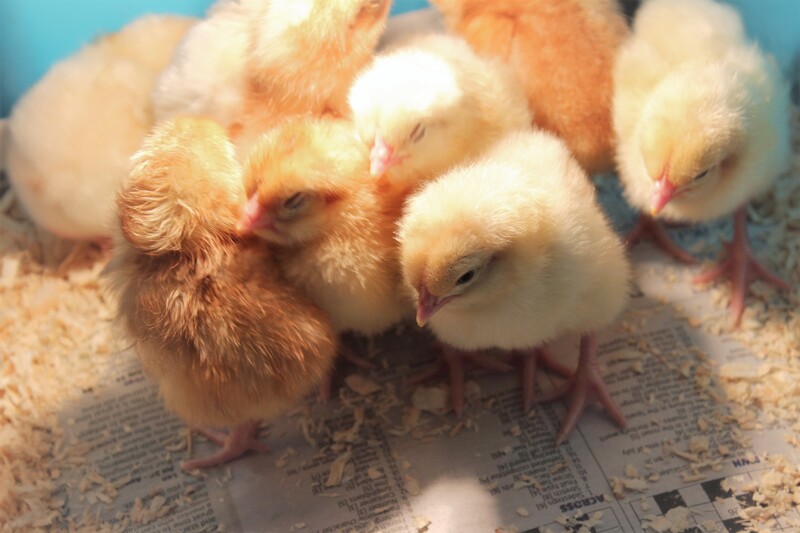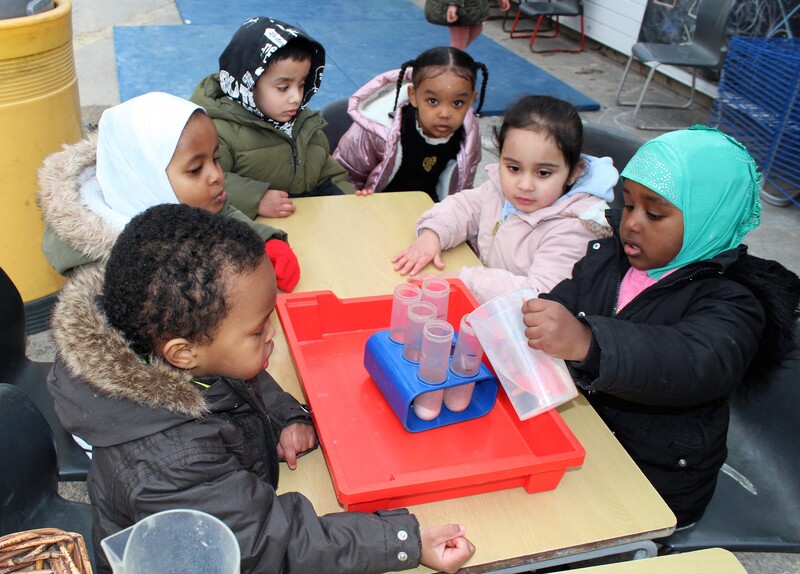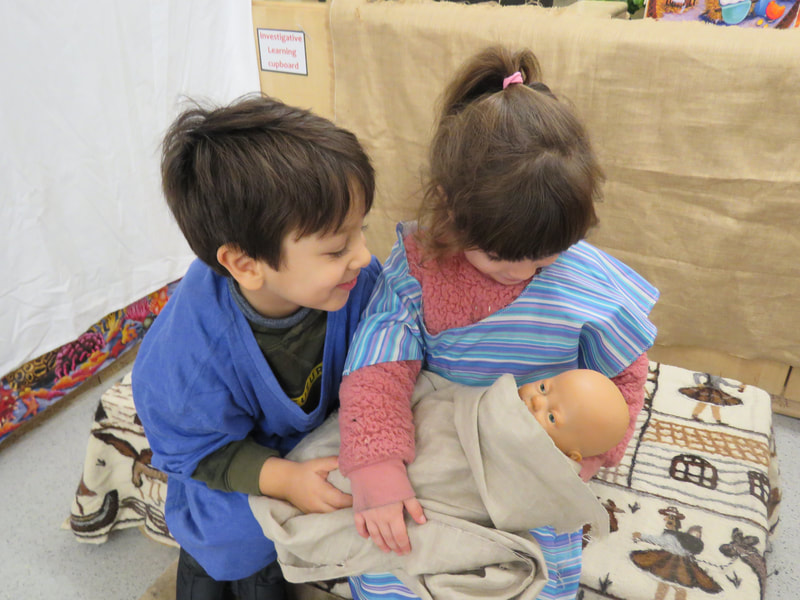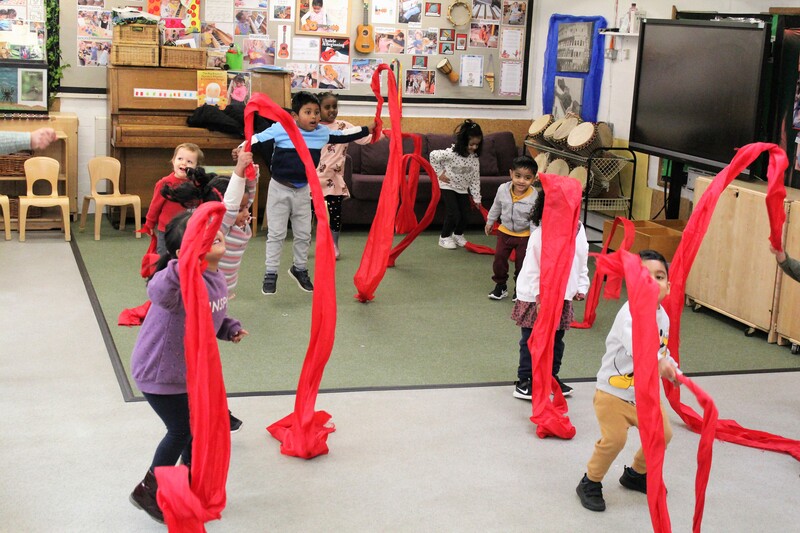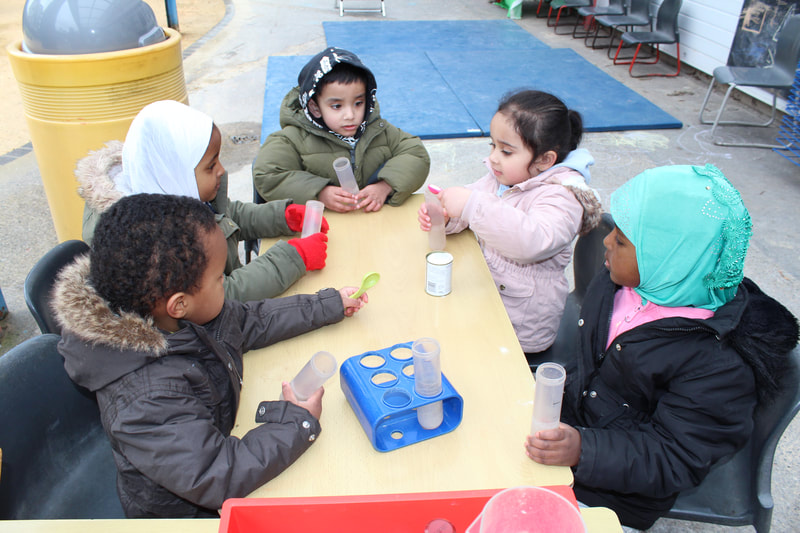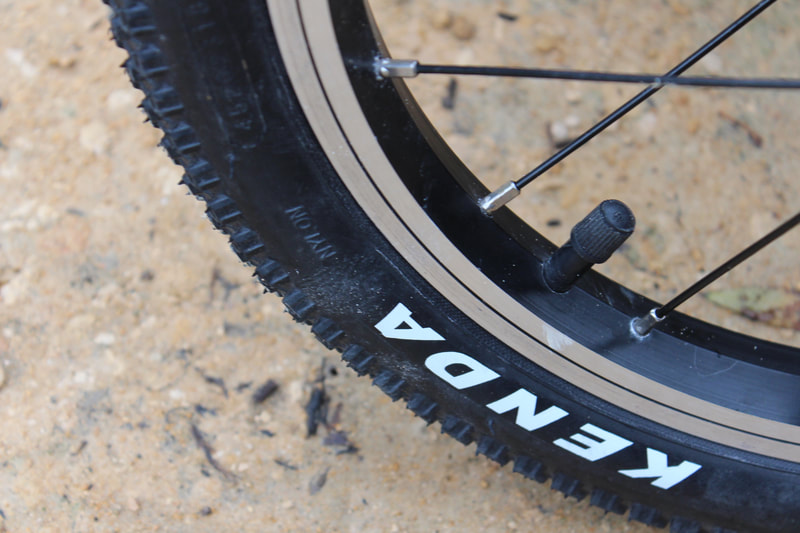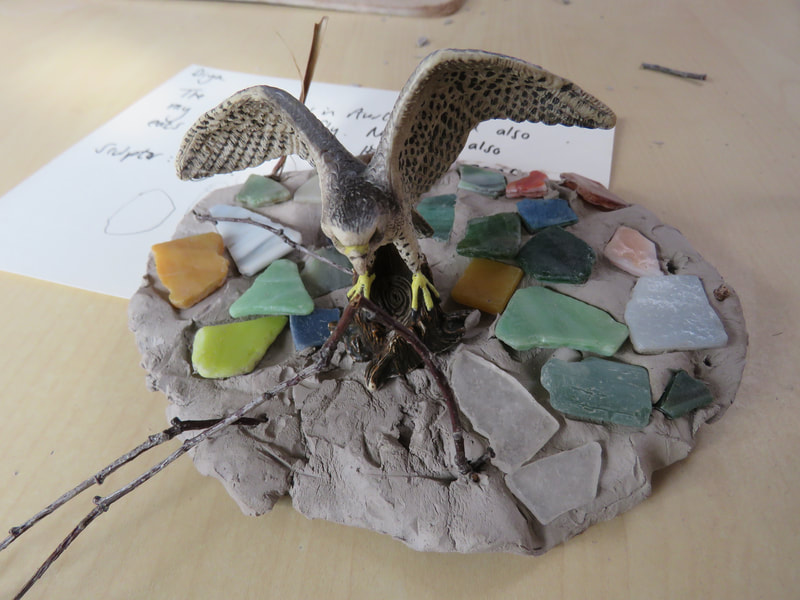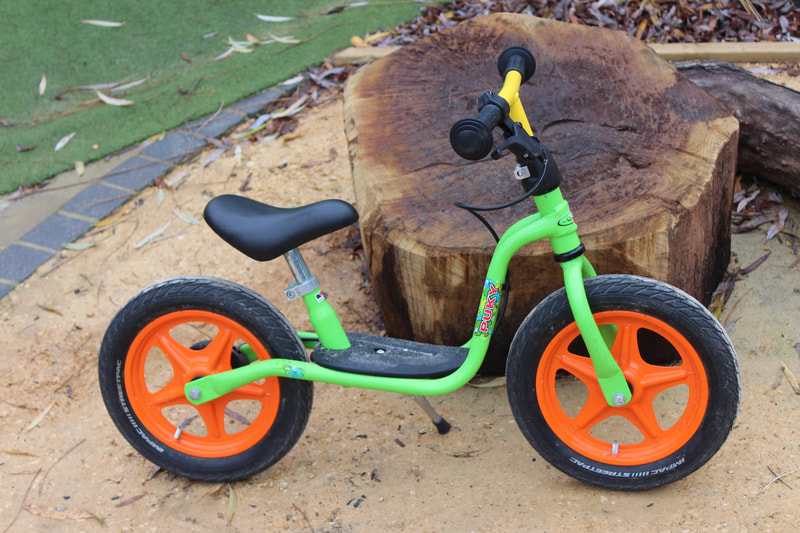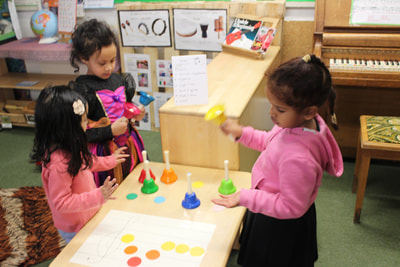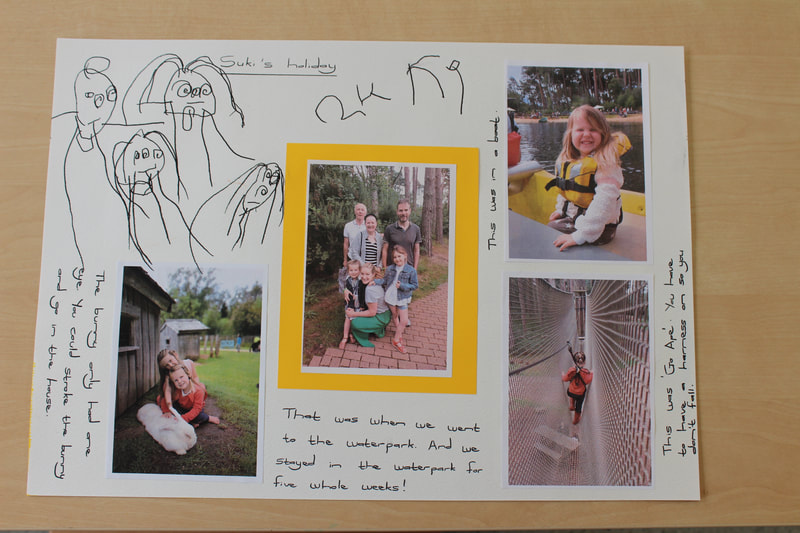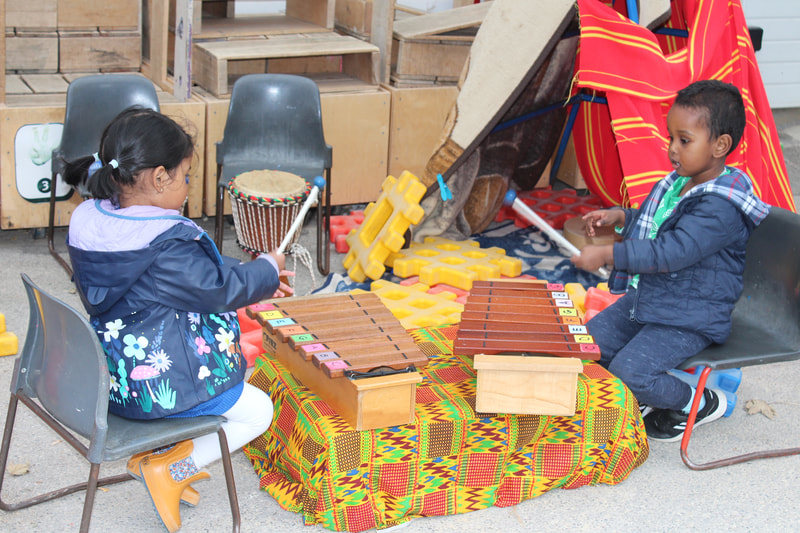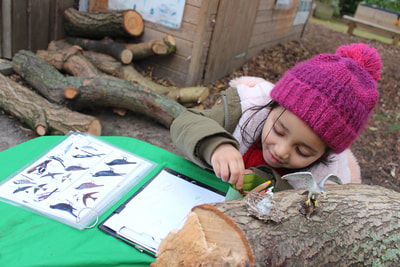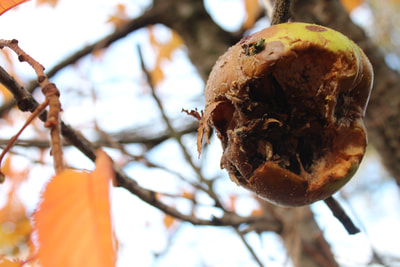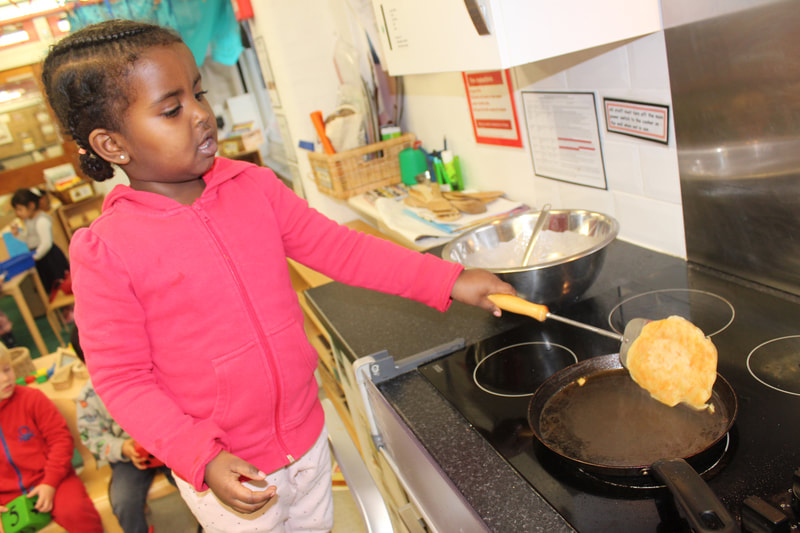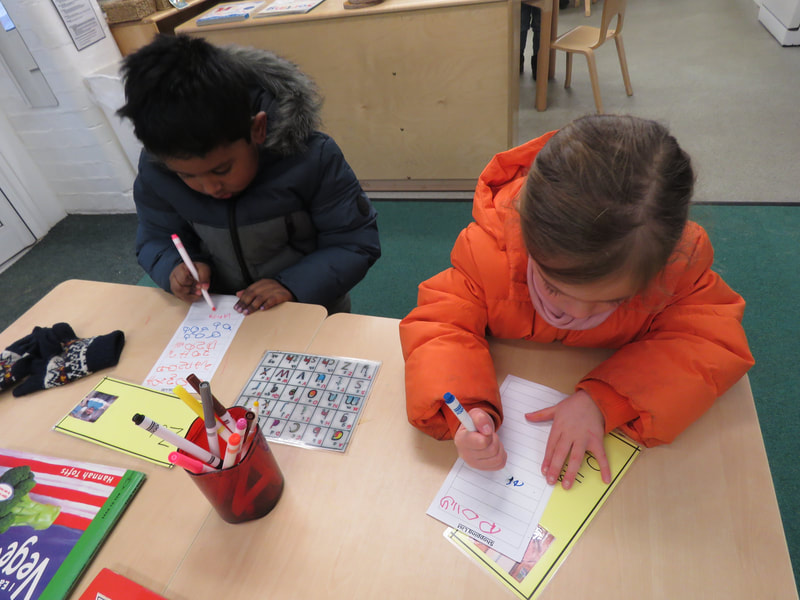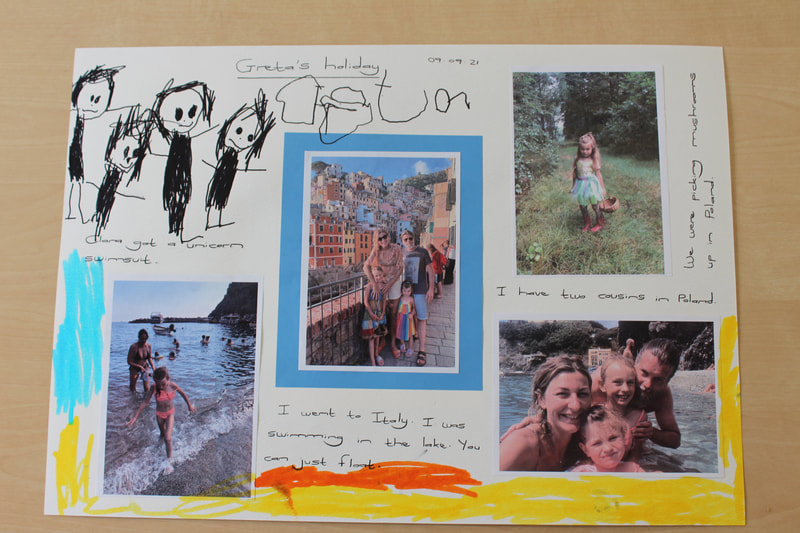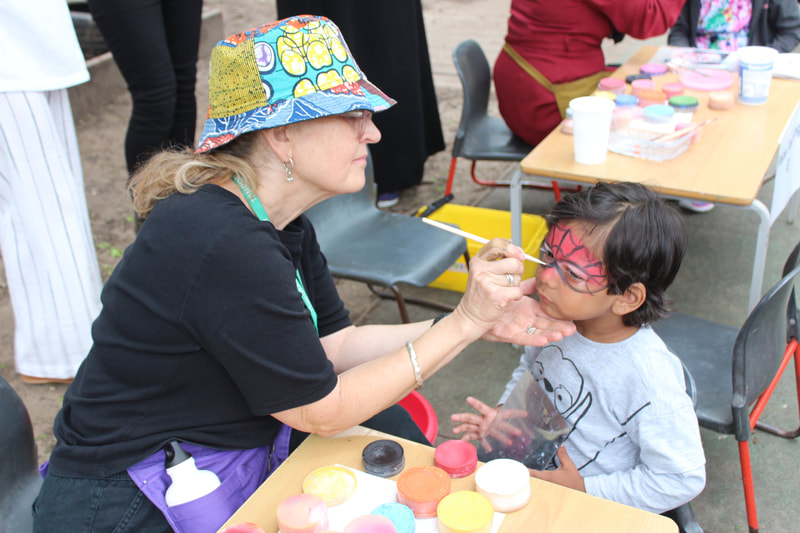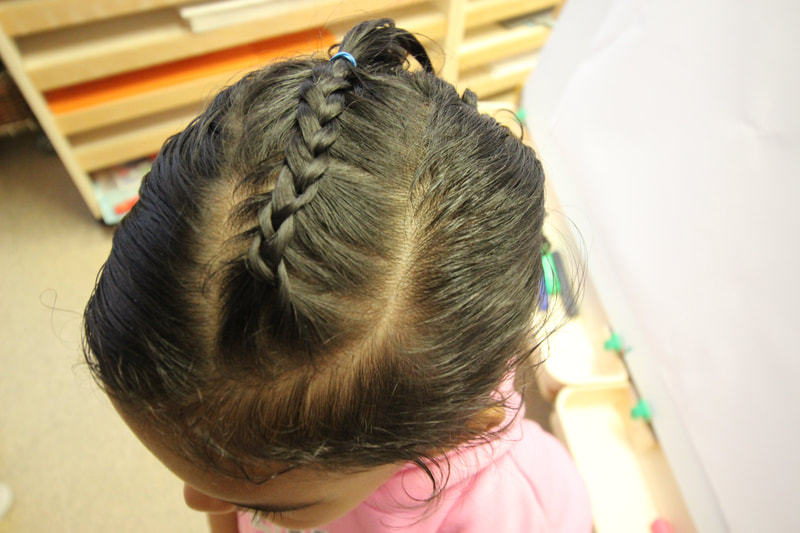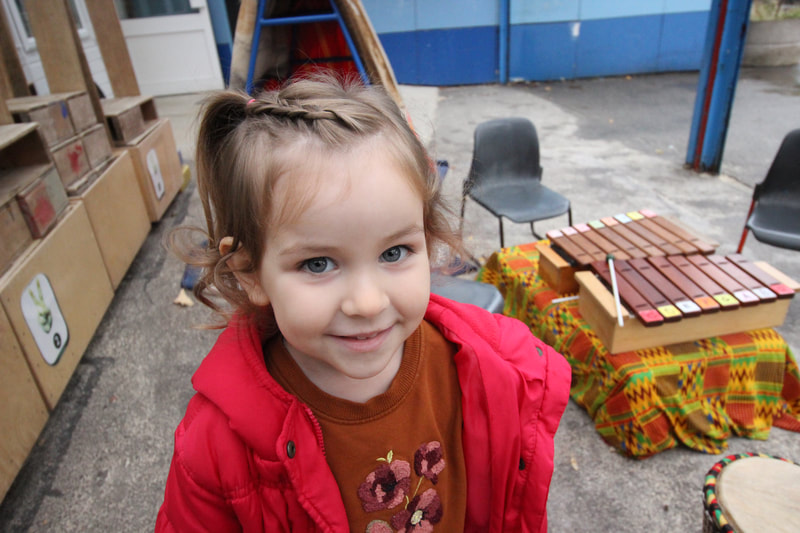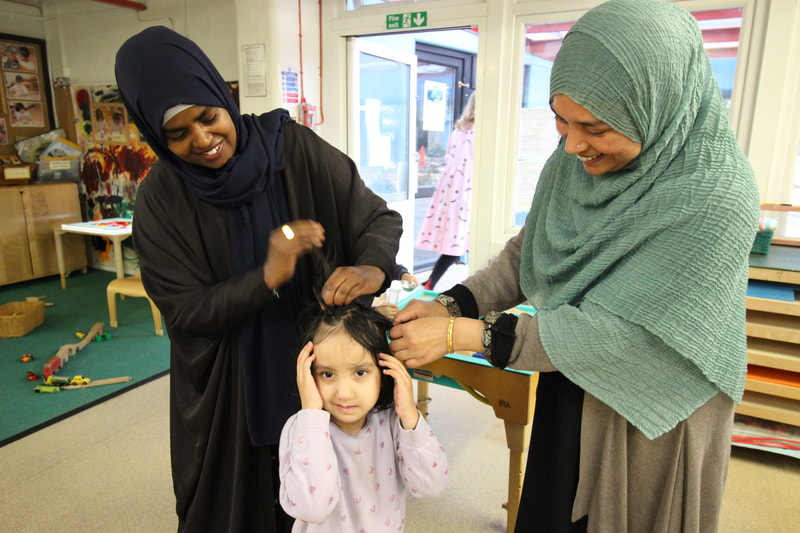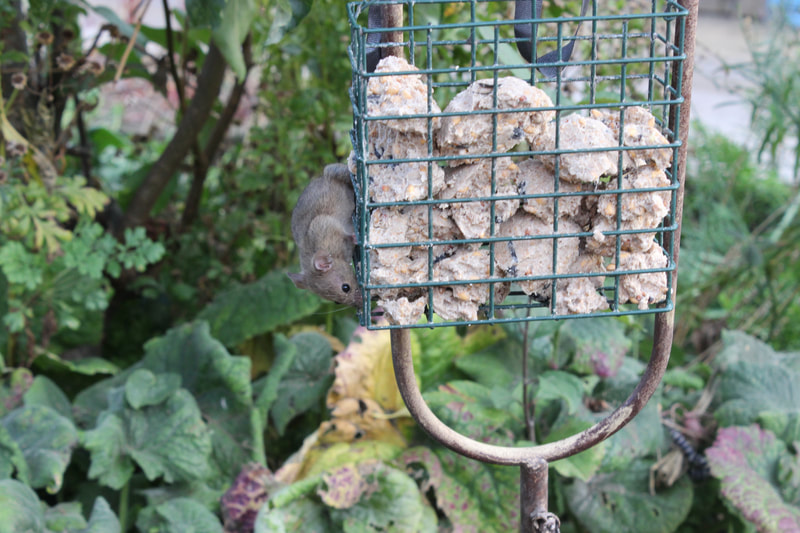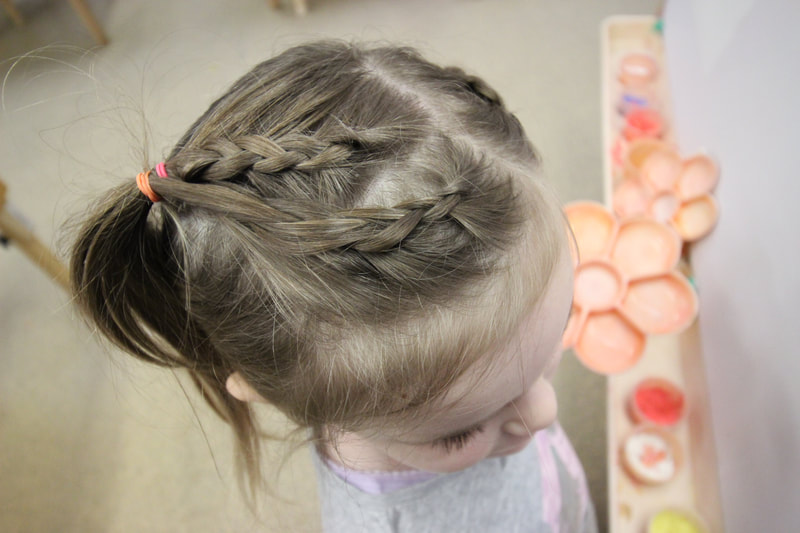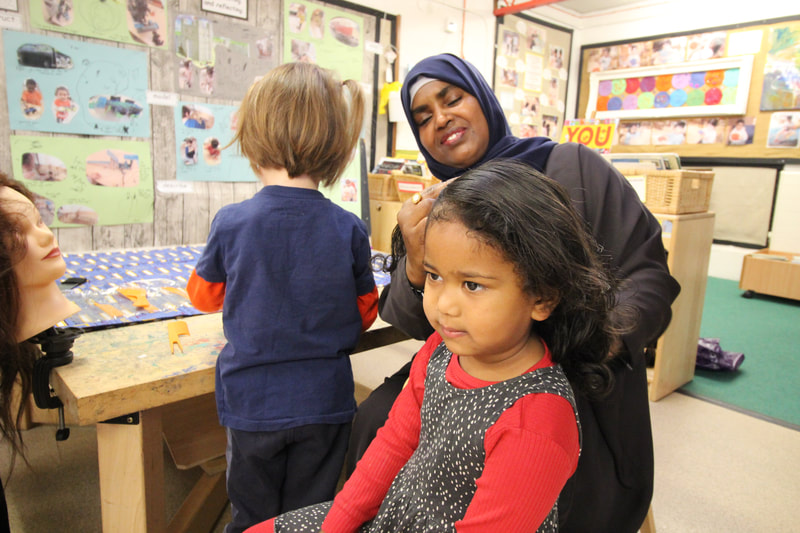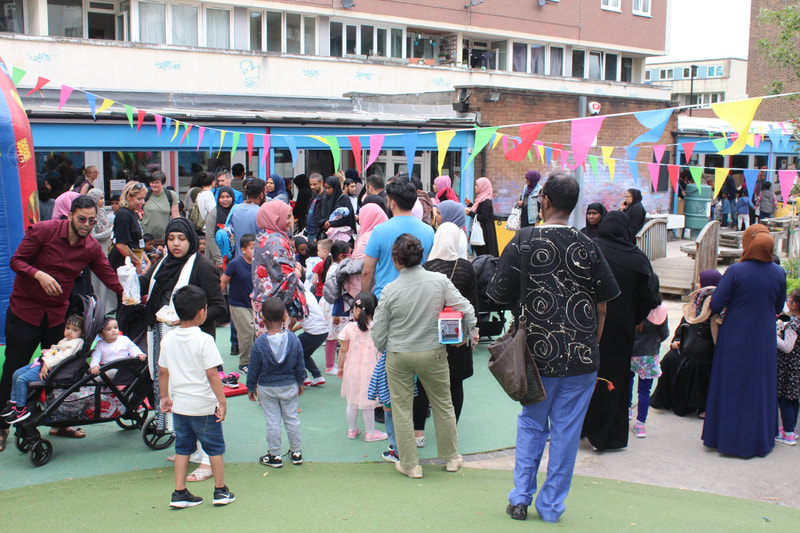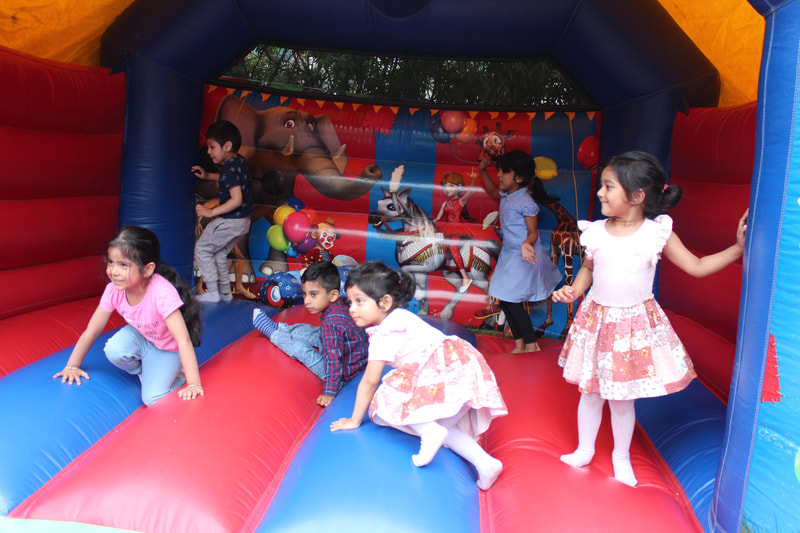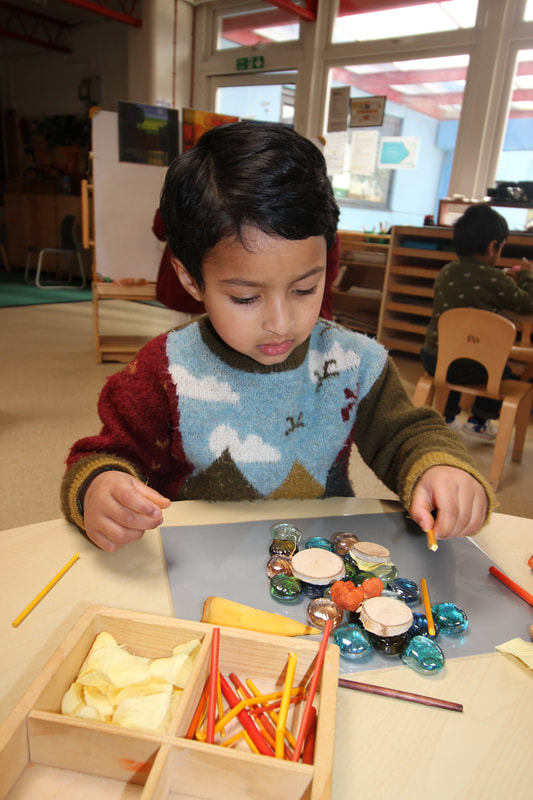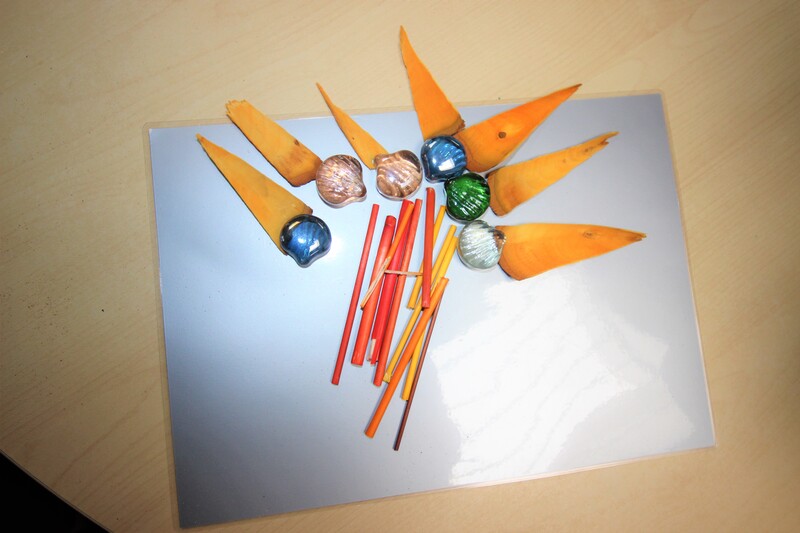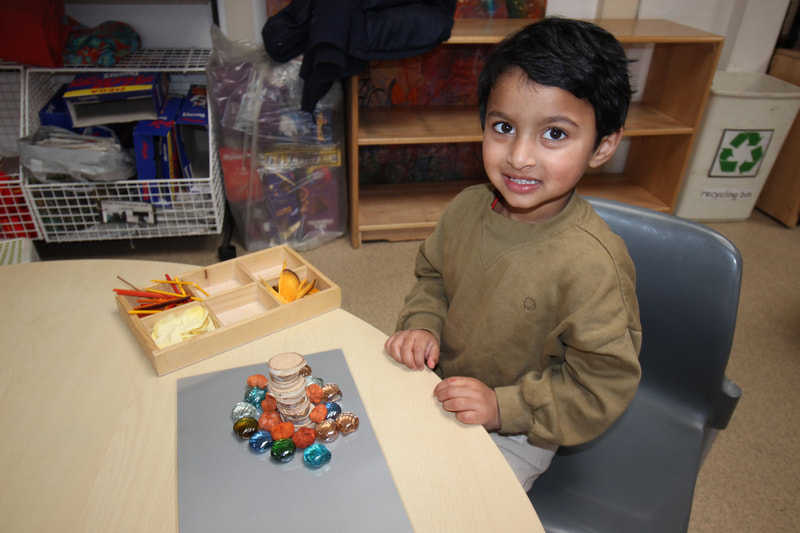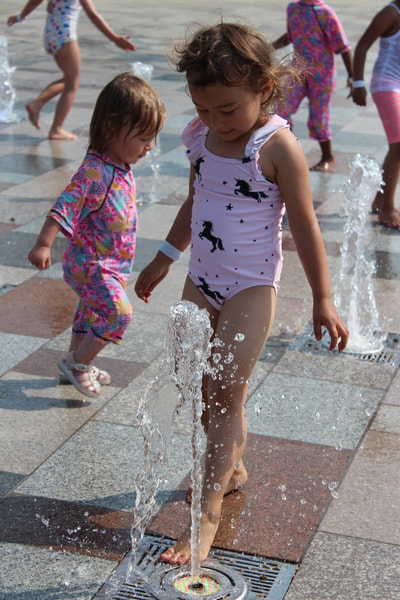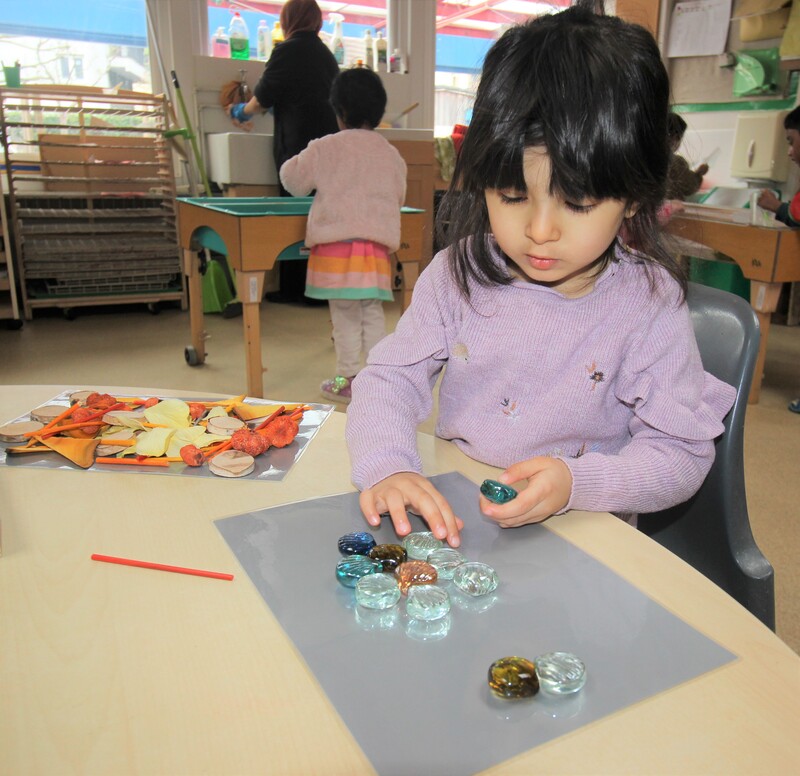|
As we near the end of term, we prepare to say farewell to some of our wonderful friends and families.
Nursery is such an important part of our children's lives and we are so thrilled you chose to spend it with us at Rachel Keeling Nursery School. Children are leaving us having grown in confidence, independence, resilience, with new friends and having experienced the awe and wonder of nature. We hope we have sparked a lifelong joy of learning and creativity. Like our beautiful trees in the garden at Rachel Keeling, we hope we all continue to grow and make the world a place filled with love and the best of humanity. Remember you are always part of our Rachel Keeling family. Children been encouraged to observe change and share their predictions and ideas about it. We also wanted to support the safe use of one handed tools.
Children made delicious ice lollies to help them stay cool in this changeable weather: they also enjoyed sharing a healthy treat. A group of children were supported to look at what fruit we had in school: there was a lot of juicy oranges donated by our lovely families Children handled them, counting them and mark making the amount. They used sharp knives to cut the oranges in half and a hand juicer to squeeze the delicious juice out. There was vocabulary such as flesh, pith, skin, peel, pips and juice used. Children were encouraged to use all their senses. Next they added water and a little sweetener and carefully poured the liquid into the moulds. They carefully counted 16 lolly sticks and placed them in the liquid. They predicted what would happen and thought about where to place them to freeze the liquid. The following day, delicious ice lollies were waiting for the children! Children took them out, closely looked and touched the moulds and shared talk and ideas. They wrote invitations for a friend to join them and shared their lollies. Some children said they tasted lemon, beetroot and orange! One child said they had "brain freeze". It's such a lovely and simple process. Other children shared sliced grapes which had been placed in the freezer overnight, These were so popular and proved a sweet and juicy treat. Maybe try at home! A HUGE Rachel Keeling thank you for your kindness, generosity and good will for our annual Summer Fete on Friday. The rain stayed away and the donations of delicious food, cakes and bric a brac meant we were able to have a truly fun time.
Thanks to our families, past, present and future: it was so wonderful to see so many of you! Thank you to our team for the planning in advance and hard work with face painting, hook a duck, lucky dip, toys, ice lollies, cakes, home cooked food and the bouncy castle. We raised just over £700 and we are thrilled: this money will go towards experiences for the children at Rachel Keeling. We were so busy we didn't get any photos!!!! Children were supported in developing an understanding and respect for each other, our hair and uniqueness.
Children shared talk, vocalising their ideas and were heard. Staff supported and unpicked some children's thinking, supporting them to think about other people's feelings. We have some beautiful books 'I Love My Hair' and a beautiful photographic book entitled 'Hair' . Children shared these books and had time to respond: this led to lots of talk about themselves. One child, L, said "We are a family!" Maria got the speaker out and they listened to Sister Sledge's 'We Are Family' and children sang and danced together. They decided to make a book: photographing some of the children and sharing talk. Once the photographs were printed, children returned to reflect and respond: talking, making marks, drawing and writing. The book was collated and is now in class, being enjoyed and shared. Children who were involved were able to express themselves and their self esteem about their hair is high! One of the children, A said "Everybody's hair is beautiful!" She is so right! Remember to support your children in developing a positive self image: their bodies, hair, strengths and personalities are all unique and to be celebrated. We were fortunate enough to work with Living Eggs again this year: the farmer deliver us 10 mystery eggs.
Children counted them and observed them closely: they were supported to tell each other what they knew about eggs: lots of children love eating eggs but we had many ideas of what might be inside. They predicted crocodiles, dinosaurs, chicks and even a unicorn!!!! One by one the eggs hatched very quickly and we had 10 healthy chicks. Children have enjoyed caring for the chicks: from cleaning them out, to feeding them and making sure they are cool in this very hot weather. Some children noticed the chicks were changing, they were growing rapidly and their feathers even changing colour. Children were encouraged to look at information books, to find out information. We discovered that there are x females and x males (the feathers are different colours). Children drew representations of the chicks and made a display. The chicks were then big and strong enough to come outside into the garden. Children handled them gently and some understood hygiene that we needed to wash our hands after handling the chicks. On Friday the chicks are going back to the farm. Children have seen them grow from egg to chick and the awe and wonder of nature has been a wonderful tool to support children's learning. Make sure you come into class before Friday to see the chicks! Maybe you can visit Stepney, hackney City or Mudchute Farm over the summer. Our families showed out in force for our annual day at the seaside this year.
The tide was out. The skies were grey. But we brought some east end joy and laughter to Southend-on-Sea! We travelled by coach (the best coach company ever - we use them every year and they have NEVER let us down!) We set up on the beach with our picnic blankets and packed lunches. Some people went straight off to find crabs in the rock pools. Others played in the fountains. A few people got the train along the pier (it boasts the world's longest pleasure pier!) The play equipment on the beach and buckets and spades were very popular and it was lovely to see families and children sharing what they had. Ice creams were on the menu at 1pm (some teachers enjoyed fish and chips too!) Back on the coach and home safely, with lot of snoring on the way back! Thank you if you were able to come. Remember you can get the train from Stratford or Liverpool Street to Southend-on Sea. Click here for things to do in Southend. At Rachel Keeling we know the importance of children having time to develop confidence and skill in using a variety of resources. They need repeated opportunities to explore, make mistakes, develop confidence and master skills over time.
Our workshop area is available to children as part of our ongoing provision. Children are supported to learn how to select materials to use to create models. They are also shown how to work with wood and use that for model making. There are a range of tools which are available for children to use freely: mark making resources, scissors, tape, glue, string and paint. There are also a range of additional materials and tools which are used with adult guidance: hot glue guns, saw, hammers, nails, wire, wire cutters and needles and thread. Children worked alongside staff designing, creating and adapting their models over three weeks. It is wonderful to see children working independently and collaboratively with purpose, pride and joy. Working with your hands on craft projects is very good for our mental health too - do you sew, garden or bake at home? We are so fortunate at Rachel Keeling to have a diverse range of staff with interests and skills in many different areas.
Nazma is a keen gardener and so is always passionate about getting children involved in the whole process from preparation to planting and harvesting. This week children were supported to use their hands to prepare the beds for planting: they weeded the soil and turned it over. They were also introduced to tools such as rakes and trowels. They were shown how to use them and had a go themselves. Children returned to the beds where potatoes are growing and planted rainbow carrot seeds alongside. Most children knew that seeds need water to grow and took it in turns to fill the watering can and give the seeds a sprinkle. Next they prepared a large pot with compost to plant sweet pumpkins. Children will help to water and care for our herbs, fruit and vegetables over coming months - it truly is a labour of love! Nazma is very excited as next week the children will help to harvest garlic as it is ready! Alongside this, Judy and some children planted sunflower seeds and have been measuring their germination journey. The children have been so patient as growth can be a slow process! Some of the children are almost at the end of their journey at Rachel Keeling and it is wonderful to see them working with our newer friends and sharing their knowledge and skills. It is like they are passing on the baton of care. Remember you can plant seeds with your children or even buy a small pot of herbs from the shop or supermarket and pop it on a window sill and care for it. Alternatively, speak to Nazma and see whether she can help you! Lize invited her key children and parents on a local nature walk this week: children and their families were encouraged to explore Meath Gardens using all their senses.
The children enjoyed seeking out things in an 'I spy...' game with their grown up. Some children shared bubbles and joy as they floated into the spring air. A picnic of cucumber sandwiches was enjoyed on a shady blanket and then children gathered natural resources (leaves, grass and feathers) to create 'nature crowns'. Children were encouraged not to pick living things. They took some lovely exercise equipment from school to play with - bats, balls and hoops and enjoyed games together. They even had time to try out the play equipment in the playground before returning to school. Dates are coming up for other key worker local trips: also remember our whole school trip to Southend on 13 June! A simple trip to the local park can be an adventure if you make it one! We are only too aware of the need to look after our planet. We support children in understanding ways to do this by thinking about waste: recycling and reusing things, fixing them and repurposing them. We support children in enjoying playing and exploration without always having 'something' to take home. Budgets also mean that many of us have less money to purchase resources that then get used up and disappear!
Thinking about how we can work meaningfully with children whilst being sustainable and supporting children in not consuming lots of resources, we have a rich variety of transient art materials. Transient art is moveable art: art that is made of loose pieces that can be moved around, placed and arranged and then put away for another day.In short, it is a cheap and easy way to provide children with a rich and stimulating creative experience. Syeda has been supporting children to explore and create with our transient art materials: there is a range of pebbles, feathers, sticks, leaves, petals, wooden disks, shells and gems. Firstly children spent time exploring the items - touching them, naming them and looking at them closely. They were encouraged to use descriptive language to talk about the colours, texture, shape, size and pattern of the items. Children then set about placing and arranging, making patterns and grouping objects to create their piece of art. Some children sustained concentration for considerable amounts of time. Transient art, because it is process-orientated, is inclusive and low risk for children: it encourages children to imagine all sorts of possibilities because there isn’t any one product that is expected of them. Maybe your child can gather resources in the park and create their own designs. A mirror makes a lovely base to create pattern and designs. You might like to look at the work of artists such as Andy Goldsworthy and Georgia O’Keeffe for inspiration. |






